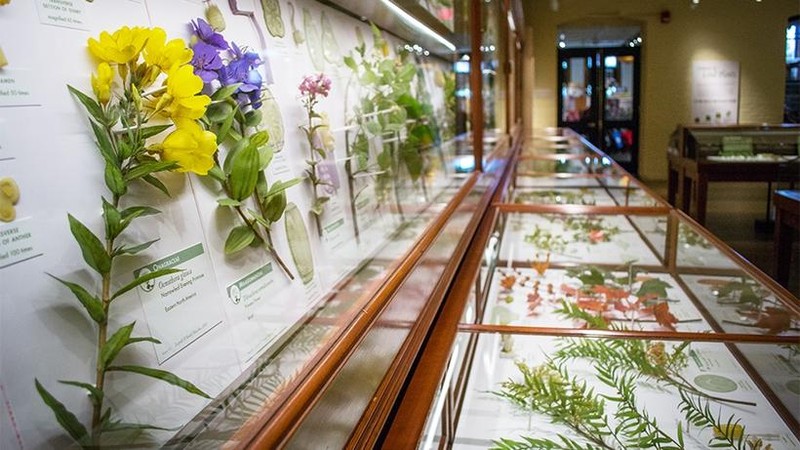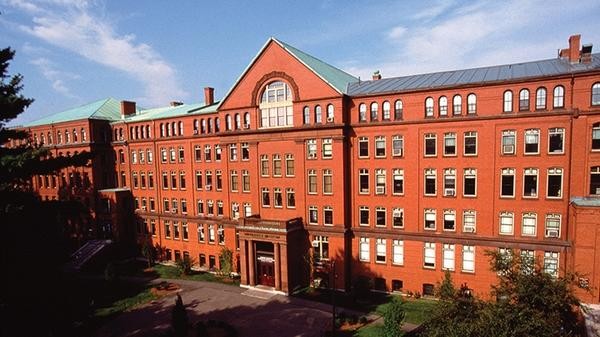Harvard Museum of Natural History
Introduction
Author-Uploaded Audio
Listen to a narration of this entry's description by Victoria Endres.
Text-to-speech Audio
Images
A 42-foot-long skeleton of a Kronosaurus on display at the Harvard Museum of Natural History

Exhibition Glass Flowers: The Ware Collection of Blaschka Glass Models of Plants.

Front of the building.

Backstory and Context
Author-Uploaded Audio
Listen to a narration of this entry's description by Victoria Endres.
Text-to-speech Audio
The Harvard Museum of Natural History is a natural history museum housed in the University Museum Building, located on the campus of Harvard University in Cambridge, Massachusetts. The most-visited attraction at Harvard—for its historical collections, its temporary exhibitions, and its new permanent galleries, its exhibitions draw on Harvard University’s natural history collections; Harvard’s research faculty provides expertise; and programs for members and the general public provide an exchange of information and ideas.
A member of the Harvard Museums of Science & Culture, the HMNH presents to the public Harvard’s natural history collections and research of scientists across the University. Its historic displays include some 11,000 specimens in new, multi-media interactive exhibits. Exhibitions range anywhere from the world-famous Blaschka "Glass Flowers,” which in itself includes blue iris, rhododendron, mountain laurel, water lily, orchids, or edible plants such as banana, mango, cashew nut and coffee to an extensive collection of minerals and meteorites, fossils, taxidermied, and jarred specimens, dinosaurs, hundreds of mammals and birds.
Today’s museum reflects both the history of its affiliate museums and an evolution toward a twenty-first-century institution that presents cutting-edge research, addresses contemporary issues, and offers creative educational experience in a unique, intimate setting.
New and changing exhibitions highlight current science and address contemporary issues including climate change and new insights into evolutionary biology. Each year, more than 250,000 people take advantage of all that the Harvard Museum of Natural History has to offer. Visitors include more than 40,000 school children in groups; adults and children from throughout the region; and tourists from around the country and the world. The museum offers a wide array of lectures, classes, and programs for learners of all ages, from school children to adults.
Sources
Harvard Museum of Natural History. Facebook. Accessed January 27, 2018. https://www.facebook.com/pg/harvardmuseumofnaturalhistory/about/?ref=page_internal.
Harvard Museum of Natural History. Smithsonian. Accessed January 28, 2018. https://www.smithsonianmag.com/museumday/venues/museum/harvard-museum-of-natural-history/#YkvtODLDB6....
History. Harvard Museum of Natural History. Accessed January 27, 2018. https://hmnh.harvard.edu/history.
The Museum. Harvard Museum of Natural History. Accessed January 27, 2018. https://hmnh.harvard.edu/about-museum.
Yvonne Jasinski
Harvard Museum of Natural History
Harvard Museum of Natural History
